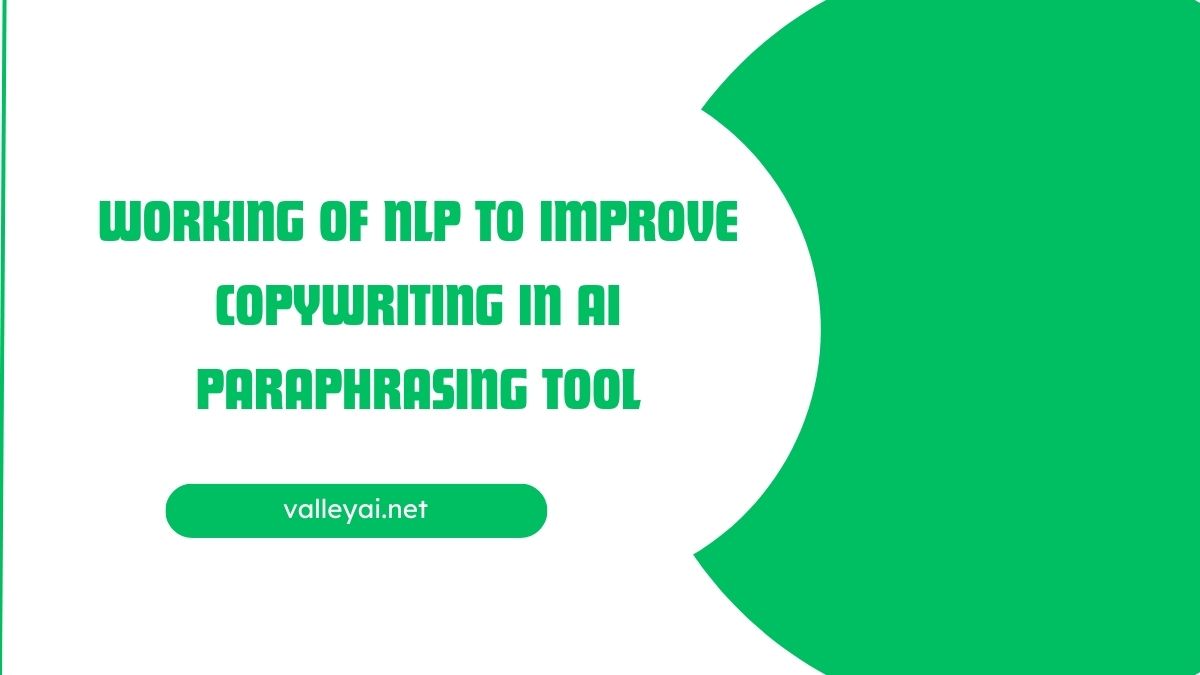Natural language processing, or NLP for short, has been extremely good for creating tools that can manipulate text. Here’s a little history lesson for you. Computers are not capable of reading human languages. They can only understand two states: 1 and 0, or on and off.
Now, programming has quite far due to artificial intelligence techniques. Now computers are capable of reading human languages. This is due to NLP. This opened up the world to a host of text manipulation tools such as paraphrasing. Today, we are going to tell you how NLP works in AI paraphrasing tools.
If you are a budding developer, or just someone interested in knowing behind-the-scenes happenings, this is the article for you.
How Does NLP Work in a Paraphrasing Tool?
Preprocessing
Therefore, NLP has a couple of steps. There is no magic going on that allows computers to understand what language is. No, there is a step-by-step process with many steps that happen at the end of which computers understand language.
We won’t go over everything as that requires a book, but we will tell you enough so that you can do more in-depth research on your own. So, here is how it works.
- Tokenization: Tokenization is the process of breaking down text into its smallest constituents. How a token is defined is up to the programmer. Sometimes each character is defined as a token, and sometimes, a token consists of multiple characters. Anyway, in tokenization, each sentence of the text is broken down into tokens.
- Word Recognition: This is the second step in which individual tokens are re-assembled into words. Each word is recognized and then checked for its position in the sentence. This is done with the help of “stop character”. Stop characters are “Space”, “Period”, “Comma”, and all other punctuation marks.
- Understanding Parts of Speech: NLP uses the same rules as us to understand language. So, it starts by trying to understand the grammar. It begins by understanding and recognizing the parts of speech in an entire sentence.
At this stage, we can say that the syntax breakdown is complete. So, the system moves on to the next step, where it deals with semantics.
Gleaning Semantics
Also known as semantic analysis, this is where machine learning comes in. Normally, semantic analysis is just impossible for computers because of the complexities of human language. It is difficult for computers to understand that a word could have multiple meanings and which meaning to use depends on the context. This had been a huge roadblock for NLP for quite a long time.
Enter machine learning. It enabled computers to do away with understanding, and instead just taught them to recognize natural language patterns. They could glean the context of a sentence by recognizing certain patterns. This is known as word sense disambiguation (WSD) and is one of the steps in semantic analysis.
Here are some of the other things that happen in semantic analysis.
- Named Entity Recognition (NER): In this process, computers recognize the names of people, organizations, and locations, or in other words, we can say, they recognize nouns. This is possible because of the parts of speech tagging in the syntax analysis.
- Semantic Role Labeling (SRL): In this process, the system identifies the relationship between words. For example, it is identifying who (subject) is doing an action (verb) on something (object). This is once again facilitated by the syntax analysis.
- Co-reference Resolution: In this process, the system identifies which words and phrases in the given text are referring to the same entity. This helps them to link pronouns to the actual nouns and helps to create “context”
- Sentiment Analysis: In this process, the system tries to detect the text’s tone. It tries to determine whether the tone is neutral, positive, or negative. This is necessary for getting more context. This is useful for copywriting because it helps to maintain the right tone or change it if necessary.
- Relation Extraction: In this process, the system tries to determine the relationships between all entities discussed in the text. This also involves inferencing whether entity A is related to entity C, based on their relationship with entity B.
Therefore, this is what is happening behind the scenes in an AI paraphrasing tool before it even paraphrases the text to improve its clarity. In the next heading, we will discuss how all of the information gained from NLP is used to paraphrase the text.
Using Paraphrasing Techniques
After text preprocessing and semantic analysis, NLP-based paraphrasing tools can create a “semantic representation” of the text. This representation is not tied to the syntax of the original text.
What this means is that the paraphrasing tool is free to use any combination of words and phrases to portray the semantic representation. This is where paraphrasing techniques come into play.
Depending on the algorithm used to create the paraphrase, the paraphrasing tool may employ one or more of the following techniques.
- Synonym exchange: This is a basic paraphrasing technique where the tool replaces specific words in the text with their synonyms. Due to NLP the new words are contextually correct, don’t alter any relations, and may change/maintain the tone. This is excellent for copywriting as it can deal with certain problems such as repetitive words/phrases, and the use of jargon.
- Phrase replacement: This is a paraphrasing technique in which entire phrases are replaced instead of words. It has the same properties as synonym exchange i.e., contextually accurate, tone changed/maintained, etc., etc.
- Sentence structure changes: This is an advanced technique in which the tool changes the sentence structure of complex sentences. One of the most prominent examples is the change from active to passive voice or vice versa.
A paraphrasing tool is not limited to using these techniques one by one. It can also use a combination of these techniques for more comprehensive paraphrasing. This is only possible due to NLP, and it has found widespread use in copywriting due to such stellar results.
Conclusion
That was the working of NLP in a paraphrasing tool. In the entire process, we saw that paraphrasing tools are now capable of understanding context, tone, and relationships between entities in a text. This helps them to paraphrase more effectively, therefore improving their copywriting abilities. The best thing about all of this is that most tools like these are available in freemium models. That means that anybody can try them out.
Admin
My name is Kaleem and i am a computer science graduate with 5+ years of experience in AI tools, tech, and web innovation. I founded ValleyAI.net to simplify AI, internet, and computer topics while curating high-quality tools from leading innovators. My clear, hands-on content is trusted by 5K+ monthly readers worldwide.

